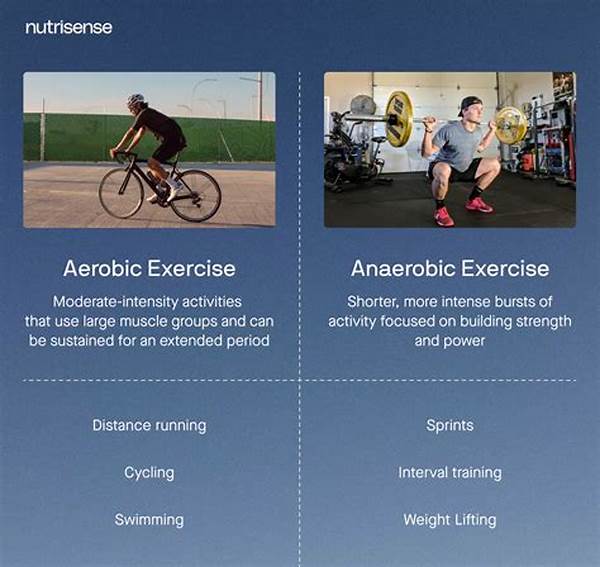Difference Between Aerobic And Anaerobic Sports Training

H1: Difference Between Aerobic and Anaerobic Sports Training
Read More : Basketball Rules And Basic Offensive Strategies Explained
In the world of sports training, the terms “aerobic” and “anaerobic” often float around, sometimes causing confusion among fitness enthusiasts. Understanding these terms not only helps in designing better training programs but also enhances performance, catering to the specific demands of various sports. Both aerobic and anaerobic training are essential, each serving unique purposes that collectively contribute to an individual’s overall fitness. In this article, we aim to unpack the difference between aerobic and anaerobic sports training, offering insights into how they impact your body, performance, and overall health. Imagine embarking on a journey where every step you take, every sprint you make, and every breath you draw can be optimized for the best results. You might have heard stories about amazing athletes who perform at incredible levels, and often, the secret lies in the strategic application of aerobic and anaerobic training.
Aerobic training, commonly associated with endurance sports like running, cycling, or swimming, focuses on the sustained performance of moderate-intensity exercises. Think of a marathon runner gracefully striding across kilometers, seemingly tireless. Aerobic exercises rely on oxygen to generate energy, improving cardiovascular endurance and overall fitness. In contrast, anaerobic training is synonymous with high-intensity, short-duration exercises like weight lifting, sprinting, or HIIT (High-Intensity Interval Training). Imagine a sprinter exploding off the blocks or a weightlifter lifting massive weights; these are classic examples of anaerobic activities. Anaerobic exercises do not primarily rely on oxygen inhalation but rather on energy stored in muscles, making them essential for building strength, power, and muscle mass.
This unique distinction forms the core of any well-rounded fitness program. By understanding the difference between aerobic and anaerobic sports training, individuals can tailor their workouts to meet specific goals. While aerobic exercises are your ally in burning fat and boosting stamina, anaerobic exercises are your ticket to increased strength and explosive power. Together, they create a balanced training regimen that caters to the holistic development of the body, much akin to a perfectly blended recipe that delights the senses.
H2: The Perfect Blend of Aerobic and Anaerobic Training
To fully comprehend the benefits of aerobic and anaerobic training, it’s crucial to grasp how these training modalities influence different aspects of performance. Aerobic exercise is your go-to for enhancing respiratory and cardiovascular health, often described as the backbone of any fitness program. By engaging in regular aerobic exercises, the heart becomes more efficient, and the body becomes adept at utilizing oxygen, providing the stamina required for long-duration activities. On the flip side, anaerobic training provides the punch, igniting performance levels by focusing on muscular strength and the capacity to perform at high intensities. Through exercises like sprinting and weight training, muscles adapt to generate force rapidly, ideal for sports requiring bursts of speed or strength.
Description: The Dynamic Duo of Aerobic and Anaerobic Training
When it comes to optimizing fitness, understanding the nuanced difference between aerobic and anaerobic sports training can unlock a treasure trove of benefits. In today’s world where fitness is often seen through a kaleidoscope of trends and fads, distinguishing between these two types of training can offer clarity and direction.
Aerobic training is characterized by rhythmic, moderate-intensity exercises that can be sustained for extended periods. Think of it as the classic engine running efficiently on fuel and air, much like a well-tuned car on a highway. Activities such as swimming, cycling, and long-distance running are prime examples, each promoting cardiovascular health, enhancing oxygen delivery, and boosting endurance levels in a sustainable, habitual manner. On the other hand, anaerobic training functions like the high-octane fuel filter in a race car, meant to provide swift bursts of explosive power. Activities like sprinting and weight lifting involve short, high-intensity bursts of activity where the body’s demand for oxygen surpasses supply, utilizing energy stored in the muscles through rapidly activating muscle fibers. These exercises promote muscle growth and increase overall power, often preferred by athletes aiming for peak strength.
H2: Benefits of Aerobic Training
Aerobic training has long been recognized as essential in maintaining cardiovascular health, ensuring the heart functions optimally as it adapts to increased oxygen demand during exercises. This type of training helps improve cardiovascular endurance, making daily activities less exhausting and more manageable. Not only does this training aid in enhancing endurance, but it also serves as a fantastic catalyst for weight management. By periodically engaging in aerobic exercises, the body becomes more proficient in utilizing fat as a fuel source, thus contributing to an efficient and effective approach to maintaining a healthy weight.
H3: The Muscle-Boosting Power of Anaerobic Training
The primary advantage of anaerobic training lies in its ability to drastically enhance muscle strength, power, and size. Even though aerobic exercises tend to have a reputation for weight loss and stamina, anaerobic exercises are the heart of building raw muscle strength. When muscles undergo anaerobic exercises, they adapt by becoming thicker and more powerful, enhancing your ability to perform high-intensity exercises and engage in swift actions.
Examples: Difference Between Aerobic and Anaerobic Sports Training
1. Marathon Running vs. Sprinting: Aerobic running requires sustained energy, while anaerobic sprinting demands explosive power.
2. Cycling for Distance vs. Cycling Sprints: Long-distance rides enhance endurance through aerobic training, while short bursts focus on anaerobic strength.
Read More : How To Read And React In Baseball Defensive Plays
3. Swimming Laps vs. Short-Distance Racing: Laps improve aerobic capacity, whereas racing enhances anaerobic power.
4. Rowing for Distance vs. Power Strokes: Aerobic endurance is built across long distances, while anaerobic strength is emphasized in short, powerful strokes.
5. Soccer Match vs. Olympic Lifting: Soccer requires both aerobic stamina and anaerobic sprints, while lifting focuses purely on anaerobic strength.
6. Zumba Dance vs. Weight Training: Dance is a rhythmic, aerobic exercise while lifting builds anaerobic power.
7. Yoga vs. Boxing: Yoga emphasizes aerobic endurance and flexibility, while boxing relies on anaerobic power and explosiveness.
8. Hiking vs. High-Intensity Circuit Training: Hiking is an aerobic activity while circuit training provides anaerobic benefits.
9. Triathlon Training vs. CrossFit: Triathlons combine aerobic endurance across disciplines, while CrossFit emphasizes anaerobic strength.
10. Dance Marathon vs. Power Yoga: Dance marathons rely on aerobic stamina, while power yoga involves anaerobic strength and resilience.
Creating the Perfect Fitness Routine
Gaining mastery over both aerobic and anaerobic exercises can significantly elevate your fitness game. With a balanced approach, you not only strengthen your cardiovascular endurance but also enhance muscle strength, leading to more versatile performance capabilities. Whether you’re aiming to shed some extra pounds or achieve a new personal record in sprinting, knowing the difference between aerobic and anaerobic sports training can set you on the right path.
Tips for Effective Training
Crafting your fitness journey with clarity about the difference between aerobic and anaerobic sports training opens a doorway to enhanced performance. In today’s world, where physical fitness plays a vital role in overall well-being, understanding these distinctions can transform goals from dreams to realities. Whether you’re running a marathon or lifting weights, being informed and strategic in your training approach ensures a rewarding and sustainable fitness journey.



